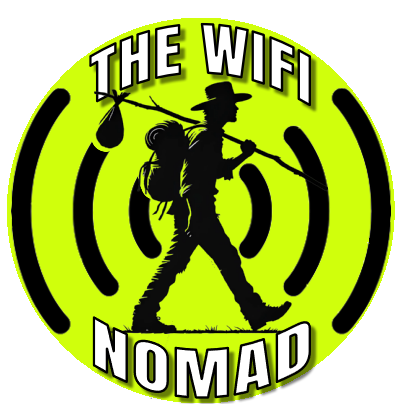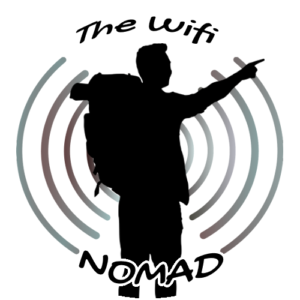I. Introduction
Have you ever read an online review or blog post and thought, “I need this right now!”—even though you hadn’t planned on buying anything that day? That’s the power of good content. In affiliate marketing your content can make or break a sale, especially when you’re promoting new or unknown products to your audience.
But what does “content that converts” look like? And how do you write so your content educates, entertains and nudges people to click your affiliate links without feeling sold to? That’s what we’ll cover in this article. We’ll get into why content is the backbone of your affiliate business, the types of high converting content you can create and practical tips to make your words (and visuals) more persuasive. By the end you’ll be ready to write affiliate articles, videos and social posts that help your audience and boost your earnings.
II. Why Content Is the Backbone of Affiliate Marketing
A. Trust
Affiliate marketing is built on trust. Your readers won’t just buy because you posted a link; they buy because they believe you. High quality, informative content builds your authority in a niche so your followers are more open to your recommendations. The key is to provide real value—answers to real questions, in-depth reviews or helpful how-to’s that solve problems or inspire new ideas.
-
Real World Example: Let’s say you’re a travel blogger who specialises in budget getaways. If every article you write is full of money saving tips, hotel hacks and personal stories about finding cheap flights, your audience will see you as a trusted source. When you finally share an affiliate link to a travel credit card or booking platform, they’ll be more likely to trust your recommendation.
B. Conversions
Quality content isn’t just fluff; it’s the bridge between a product and a potential buyer. A good article or video takes someone through how a product solves their problem, overcomes their objections and fits into their life. That process—moving someone from curiosity to purchase—happens when you write content that educates, reassures and demonstrates value.
-
Key Point: Not everyone who lands on your page is in the same stage of the buying cycle. Some are just browsing, others are comparing options and a few are one click away from buying. Good content accounts for these different stages, provides enough detail for those who need it but also clear calls to action (CTAs) for those ready to buy.
III. High Converting Affiliate Content
There’s no one-size-fits-all formula but certain types of content perform well in affiliate marketing. Mix and match these to keep your content fresh and address different reader needs.
1. Product Reviews
What They Are: In-depth articles or videos about a single product or service. You might share your personal experience, highlight features and discuss pros and cons.
-
Why They Convert: People searching for reviews are often close to buying; they just need to be convinced. A good review details real world usage, addresses objections and shows how the product fits into their life.
-
Pro Tip: Add screenshots, personal photos or a short demo video if you can. Authenticity is key; mention any drawbacks or limitations you’ve found.
2. Tutorials & How-Tos
What They Are: Step by step guides that show readers how to do something—often using the affiliate product.
-
Why They Convert: People looking for a tutorial are problem solvers looking for instant answers. If your solution involves or showcases the affiliate product you’re demonstrating its value in action.
-
Example: A “How to Set Up a WordPress Blog in 30 Minutes” post that naturally links to a recommended hosting provider. Readers follow along, see how easy it is and often sign up through your affiliate link.
3. Comparison Posts
What They Are: Articles that compare two or more products—like “Product A vs. Product B”.
-
Why They Convert: Readers love honest comparisons especially when they’re stuck between similar options. By breaking down features, pros and cons side by side you position yourself as a helpful guide. They’ll buy through you once they decide.
-
Pro Tip: Use tables or bullet points for clarity. Highlight who each product is best for. This helps readers self select the right choice.
4. Listicles (e.g. “Top 5 for XYZ”)
What They Are: Roundup posts that list multiple affiliate products around a topic, like “5 Best Cameras for Travel Photography”.
-
Why They Convert: Listicles are quick and scannable. They attract both casual browsers and dedicated researchers. Each item on the list can link to a different affiliate product so you increase your chances of conversion.
-
Warning: Make sure the products really fit the list’s topic; padding the list with irrelevant products will erode trust.
5. Buyer’s Guides
What They Are: In-depth overviews of everything a buyer needs to know before buying in your niche, like “Ultimate Buyer’s Guide to Gaming Laptops”.
-
Why They Convert: These guides appeal to thorough researchers who want to know the key features, price ranges and brand reputation. If you structure the guide well you can take readers from basic considerations all the way to product recommendations.
-
Value Add: Include a “What to Look For” section (e.g. processor specs, battery life, warranty details) so readers feel educated. Add affiliate links to relevant products that meet each criteria.
IV. Writing Persuasive Content
1. Reader Intent
Ask yourself: What stage of the buying cycle is this reader in? Are they just exploring solutions (“Which camera brand is good?”), actively comparing (“Canon vs. Nikon for beginners?”), or ready to buy (“Best deals on Canon Rebel T7i”)? Tailor your content accordingly:
-
Casual Browsers: Offer summaries, simpler language and broad comparisons.
-
Active Researchers: Provide detailed specs, pros/cons, user reviews and personal opinions.
-
Ready Buyers: Highlight direct CTAs, discount codes or exclusive offers to encourage action.
2. Pain Points
Most purchases solve a problem or make a user’s life better. Whether it’s saving time, improving health or achieving a personal goal, identify your audience’s biggest pain points and connect them to the product’s features.
-
Example: If you’re promoting a productivity app, talk about how it helps busy professionals reduce email clutter, schedule tasks effortlessly or integrate multiple calendars. Show how it solves the exact problems they face.
3. Clear Calls to Action (CTAs)
Your content may be great but if you don’t tell readers what to do next you’ll lose conversions. Effective CTAs:
-
Stand Out Visually: A button, bold text or a link.
-
Use Action-Oriented Language: “Click here to get your 30-day free trial,” or “Check the latest price on [Product Name]”.
-
Don’t Overdo It: Too many CTAs can look spammy. One or two per article (plus a final reminder) is often enough.
4. Authenticity and Transparency
Modern readers are smart; they can spot promotional content from a mile away. Make sure to include disclaimers (it’s often a legal requirement in many countries) and share both pros and cons. If you haven’t used a product yourself, be upfront about that. Trust is built on honesty – if something isn’t perfect, own up.
-
Disclosure: Following your region’s affiliate disclosure guidelines (e.g. the FTC in the U.S.) isn’t just good practice – it’s the law. Being transparent can also build trust with readers.
V. Visuals, Examples and Proof
1. Screenshots/Images
If you’re reviewing software, show screenshots of the dashboard or key features. For physical products, post photos of the product in use. Visuals prove you’ve actually used it, credibility booster.
-
Pro Tip: Keep images relevant. A random stock photo might be distracting and won’t convert. Real or high-quality images are more convincing.
2. Videos
A short demo or unboxing video can increase conversions big time, especially on social media. People like to see a product in action before they buy.
-
Hosting Options: You can embed YouTube videos in your blog or share on Instagram Reels, TikTok or wherever your audience hangs out.
3. Social Proof
Include testimonials, user reviews or personal results if you have them. Even a quick snippet like “Over 10,000 happy customers have rated this 4.8 stars” can convert. If you have personal success stories – like losing weight, saving money or improving a skill – mention them to show real world results.
VI. Step-by-Step: Writing Your First Affiliate Post
Let’s break it down into a simple structure you can follow for any affiliate post, especially if you’re just starting out.
1. Introduce the Topic
-
Goal: Hook the reader with a question, anecdote or a key pain point.
-
Example: “Having trouble keeping your home office organized? I’ve been there. Here’s the system that worked for me.”
-
Key Points: Focus on how it solves the problem. Include personal anecdotes or real life scenarios.
-
CTA: Add a link for those who are already convinced or curious.
3. CTA
-
Goal: Get people to click, sign up or learn more.
-
Placement: You can add a CTA at the beginning for the impatient and another in the middle or end for those who want to read more.
4. Conclusion
-
Goal: Summarise the benefits and restate why it’s a good fit.
-
Bonus CTA: If you haven’t added enough CTA’s already, add one more with a link.
5. SEO
-
Keywords: Add relevant keywords throughout the article, especially in headings and first 100 words.
-
Meta Descriptions: Write a short, action-oriented meta description that teases the article.
-
Internal Linking: Link to other relevant posts you’ve written, so readers can keep coming back to your site.
VII. Action Steps (CTA Section)
1. Content Brainstorm
-
Task: Think of 2-3 affiliate content pieces that fit your niche. Maybe a product review, a tutorial or a comparison post. Write down potential titles.
2. Write Your Post
-
Task: Follow the “Step-by-Step” above. Be authentic, address pain points and add a CTA. Don’t forget disclaimers and personal touches.
3. Publish & Share
-
Task: Publish on your blog or social media. Share in newsletters or relevant community forums. Monitor the response.
4. Teaser for Next Post
-
Reason: Link this content creation strategy to the next post in your series – maybe “Building Trust with Your Audience” or “Driving Traffic to Your Affiliate Content.”
-
CTA: Subscribe or follow so you don’t miss the next post that builds on these skills.
VIII. Teaser for Next Post
“Next Up: Building Trust with Your Audience”
Now that you know how to create content, the next step is to make sure your audience trusts you and the offers you promote. Trust is the invisible currency of affiliate marketing. In Article #7 we’ll dive into practical ways to build long term credibility—transparency, ethical promotions and community engagement. Coming soon!
IX. Conclusion
Creating content that converts isn’t about tricking people or using hard sell tactics. It’s about clarity, honesty and value. Whether you’re writing a detailed product review, a helpful tutorial or a quick comparison, the goal is the same: Help your audience make an informed decision that benefits them.
Remember to tailor your writing and visuals to your audience. Address their problems head on, illustrate with real life examples and guide them gently to the next step (a click on your affiliate link). Over time, producing such high quality, authentic content will build a loyal following. When readers see you delivering solutions that work, they’ll keep coming back and yes, they’ll often buy through your links.
Now go—choose that first product or service you love, write your post and let your personality and expertise show. The more value you add, the more trust you build and the more conversions will flow.


